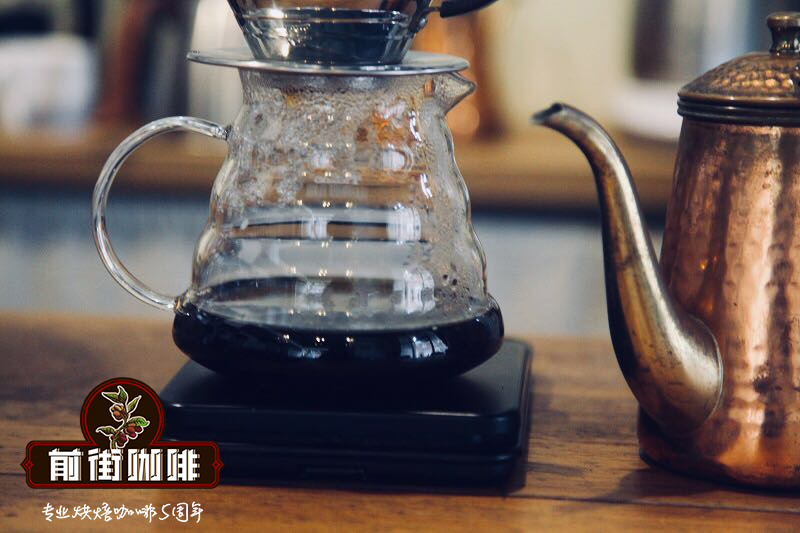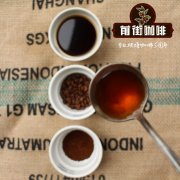Is Kenyan coffee brewed or brewed? how do you drink Kenyan coffee?

Professional coffee knowledge exchange more coffee bean information please follow the coffee workshop (Wechat official account cafe_style)
Kenya has always had a reputation for excellence in quality when it comes to coffee production. This may have something to do with its geographical location, after all, close to the birthplace of coffee beans. Kenya has been one of the leaders of the coffee industry since coffee beans traveled through the mountains from Ethiopia to Kenya. In the mountains of Gaoyuan? The coffee beans produced under the terrain are generally mellow in consistency, excellent in taste and pleasant in acidity. The person with the fragrance will also exude the delicate fragrance of flowers, and the aftertaste is not only lemon berry but also wine.
Kenyan coffee grade
Kenyan coffee has a unique domestic rating system to measure the size, weight and shape of beans, generally divided into AA,AB,PB,C,E,TT and T. Bean size is an important criterion for scoring because soybeans show more aroma and stronger taste, both of which will be valued by coffee fans. If all the conditions of the two beans are the same, only the difference in size, the quality of soybeans will always be higher.
Kenyan coffee quality
Arabica in Kenya grows in volcanic soil between 1400 and 2000 meters above sea level. This high altitude produces coffee with outstanding taste and high acidity. The palate is rich in flavors, with a wine finish and citrus and berry overtones.
On the other hand, fierce competition among farmers is also one of the factors of high quality. In Nairobi, the capital of Kenya, a public auction of coffee is held every week. Apart from the lively scene, farmers with high-quality coffee beans can also make huge profits, repeatedly promoting the progress of the coffee industry. Even international coffee buyers come to Nairobi to buy coffee and then distribute it to coffee outlets around the world.
Production
Since the introduction of coffee beans in 1893, coffee has been produced in Kenya for more than a century. The area of coffee production occupies a full 160000 hectares, which is one-third of the total planting area.
At present, coffee production in the mainland fluctuates mainly due to climatic and socio-economic factors. At present, about 1 million bags are produced each year, and there are two harvesting times, namely, March, April, the beginning of the rainy season and October.
Kenya AA
The growing environment of Kenya's AA is 6600 square feet, making it one of the best quality coffee in the world. Growing on high sources means slower growth, in which case coffee beans absorb more nutrients, allowing the taste to take longer to brew, thus becoming richer. As the finest coffee beans in Kenya, all AA coffee is made from the most impeccable Arabica beans. Treated by washing and refining, the peeling of the coffee fruit is backward, and the farmers will soak the beans in the water tank. In the process, the enzyme of the coffee bean itself will naturally break down the residue on the bean. When it is dried in the sun, the farmer can remove the skin without any effort. After grinding, the size of the beans is measured and graded.
There are good beans and good baking to match. To bring out the characteristics of Kenyan AA beans is to bring out its strong citrus and berry flavors. The reason for drinking Kenyan AA beans is nothing more than being attracted by its flavor, almost without a little bitterness. The best AA beans are often roasted moderately, but too high will make them lose their unique characteristics. Kenya AA beans are the largest beans produced in China, and the brewed coffee is always mixed with fruit and flowers. Finally, like ordinary individual coffee, coffee beans always need to be freshly processed no matter how roasted they are, and goods that have been kept in the distribution warehouse for several months need to be avoided when making a profit.
The main varieties of Kenyan coffee are SL28 and SL34. It was cultivated and named by the "Scott Laboratories" laboratory in 1930. According to botanists in SL laboratory, SL28 and SL34 are genetic variants. Among them, SL28 has a mixed pedigree of French missionaries, mocha and Yemeni Tibica. The goal of cultivating SL28 was to mass produce coffee beans with high quality and resistance to diseases and insect pests. Although SL28 did not produce as much as expected, copper and broad bean-shaped beans have great sweetness, balance and complex flavor, as well as significant citrus and black plum characteristics. SL34 is similar to SL28 in flavor, with a heavier, fuller and cleaner finish than SL28, except for the complex acidity and great sweetness of the finish. SL34 has French missionaries, bourbon, and more Tibica ancestry. Dou looks similar to SL28, but is more adaptable to sudden heavy rain. It is these two important varieties that lead us to know the unique Kenyan coffee beans. And you can see all these in the front street coffee!
Qianjie Coffee recommends Kenyan coffee brewing parameters:
V60According 91-92 ℃ / 1 15 / time two minutes
Flavor:
Rich aroma of virgin fruit and sweet sucrose
Important Notice :
前街咖啡 FrontStreet Coffee has moved to new addredd:
FrontStreet Coffee Address: 315,Donghua East Road,GuangZhou
Tel:020 38364473
- Prev

Kenya Coffee Grading Kenya Coffee Features Kenya Coffee Why Acid
Professional coffee knowledge exchange More coffee bean information Please pay attention to coffee workshop (Weixin Official Accounts cafe_style) Kenya coffee is famous for its acidity and enjoys a good reputation in terms of quality and industry practices. The best coffee in the region, with a variety of flavours, rich fruit with berry notes; deep, thick, full aroma, some varieties even sweet and aromatic
- Next

Why did Peru, the pioneer of organic coffee, find organic coffee?
Professional coffee knowledge exchange more coffee bean information please follow the coffee workshop (Wechat official account cafe_style) Peru is located in western South America, bordering the South Pacific, between Chile and Ecuador. Peru has a very diverse climate, from the tropics in the east to the dry deserts in the west, and from the temperate zone to the cold of the Andes. Different climates and the main geography of Peru
Related
- Detailed explanation of Jadeite planting Land in Panamanian Jadeite Manor introduction to the grading system of Jadeite competitive bidding, Red bid, Green bid and Rose Summer
- Story of Coffee planting in Brenka region of Costa Rica Stonehenge Manor anaerobic heavy honey treatment of flavor mouth
- What's on the barrel of Blue Mountain Coffee beans?
- Can American coffee also pull flowers? How to use hot American style to pull out a good-looking pattern?
- Can you make a cold extract with coffee beans? What is the right proportion for cold-extracted coffee formula?
- Indonesian PWN Gold Mandrine Coffee Origin Features Flavor How to Chong? Mandolin coffee is American.
- A brief introduction to the flavor characteristics of Brazilian yellow bourbon coffee beans
- What is the effect of different water quality on the flavor of cold-extracted coffee? What kind of water is best for brewing coffee?
- Why do you think of Rose Summer whenever you mention Panamanian coffee?
- Introduction to the characteristics of authentic blue mountain coffee bean producing areas? What is the CIB Coffee Authority in Jamaica?

